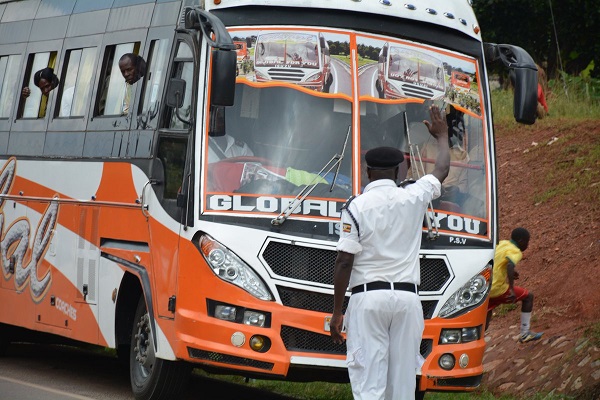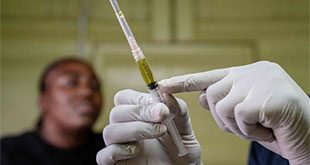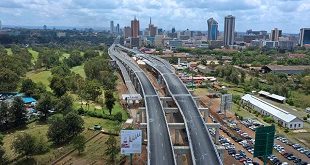
Many people have cited the alleged narrowness of the road and blamed the Uganda National Roads Authority (UNRA) for failing to fix it. Few care that, in fact, this is a brand new wide road whose reconstruction ended just three years ago in 2013.
The work was done by the Nigerian firm, Reynolds Construction Company (RCC), which in 2009 got the contract to re-align the sharp bends that dot this road. The RCC contract also included construction of climbing lanes, parking lanes, bus bays, and junctions along the way. Most of these are now in place.
But that has not stopped calls for a redesign whenever there is a major accident, especially one involving a very important personality. In 2015, members of parliament demanded a probe into the road design after Miss Tourism ambassadors perished in a nasty accident on the highway.
Muwanga Kivumbi, the MP for Butambala County through which this road passes led the call. He argued that the road was still narrow and needed to be expanded in width from 6.5 metres to 11 metres; in other words he was demanding a four lane road.
Mugumya, who says he often drives on this road, also says sections of it are slippery. That is another common complaint.
Such complaints have led to another redesign of the road with attention to known accident spots. But the re-development has instead led to a higher spate of accidents in the very spots that were worked on to prevent the carnage. Kivumbi remains unimpressed. He told The Independent on Aug.2 that for a transnational highway which handles a big volume of traffic, Masaka road remains quite narrow.
Meanwhile, the police say over 80% of the accidents registered on this road is a result of human error and the biggest percentage of this is caused by drivers.
Ibin Ssenkumbi, the Police Spokesperson for Greater Masaka says one reason why accidents are not about to end is that Ugandan drivers have been conditioned to only behave appropriately when they anticipate traffic officers at particular sections of the road.
I notice this with our mini-bus driver on my way back from Masaka at a place called Lungala—another black spot. When our driver spots two female traffic police officers a short distance away, he starts fidgeting with his seat belt – pretending to fasten it. Seconds later, after bypassing the officers, he yanks it off.
Masaka Road passes through the districts of Wakiso, Mpigi, Kalungu, Lwengo, and Masaka and the police say the most dangerous parts start as soon as one clears Kampala through Mpigi all the way down to Masaka.
At Masaka, there is a fork in the road and another 88km section continues after Masaka to Mutukula on the Tanzania border and another one goes 136km to Mbarara on the route to the Rwanda border but, police say surprisingly, they are not as dangerous; possibly because they have less traffic.
Ssenkumbi oversees the section between Kalungu, Masaka, Lwengo and Lyantonde. He told The Independent that there had been close to 140 accidents in the section under his jurisdiction in the last seven months with about 90 deaths and over 100 injuries.
Fog and blind spots
Along this 130km highway, many sections are designated as non-overtaking sections as signaled by the traffic signs mounted by UNRA and the yellow and white continuous lines painted in the middle section of the road. There are also signs for speed limits, animal crossings, and road bumps.
In between some of the most dangerous spots, between Kammengo, Lukaya, and Masaka— a distance of slightly over 80kms— a whopping 23 spots stretching a distance of 15km have been marked out as dangerous black-spots and overtaking is prohibited.
Mukasa says road accident concerns begin from Nsangi in Mpigi district all the way to Lukaya in Kalungu district, a distance of about 50 kilometres. He describes the features of this section as “having straight and sloping sections”. He mentions black spot at Nsimbe, Lungala, and Katende.
“As you slope down Katende, the road is wide and motorists normally see the clear road as a license to drive faster,” he says, “They will speed and clearly the problem is indiscipline of the motorists.”
Further ahead there are black spots at Kampiringisa, Kalandazzi and Mitala Maria. Here too the sections are clear and straight, giving motorists a licence to drive so fast. Mukasa says he has no record of an accident occurring around bends.
In other places, the highway cuts through possibly half a dozen wetlands which are normally covered in fog in the early morning hours.
“The fog that hangs in the wetlands makes visibility a challenge especially in the early morning hours and that calls for discipline to drive in those kinds of conditions,” says Grace Nampijja; the Greater Masaka Regional Traffic Officer.
She implicates foggy conditions in the death of her colleague, Deogratius Kweyamba, the former Kalungu District Traffic Police Officer who died after being hit by a truck at Mukoko trading centre on July 17. Kweyamba was at the scene of an earlier accident involving a pile up of vehicles including a trailer, a Fuso truck, and several other cars when another truck struck him dead. Four other people died.
 The Independent Uganda: You get the Truth we Pay the Price
The Independent Uganda: You get the Truth we Pay the Price





